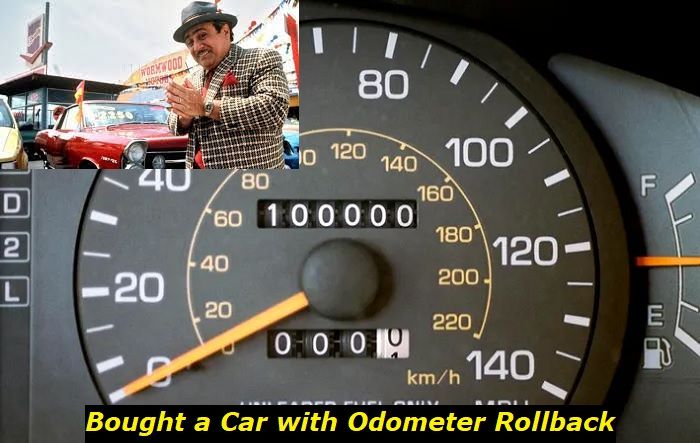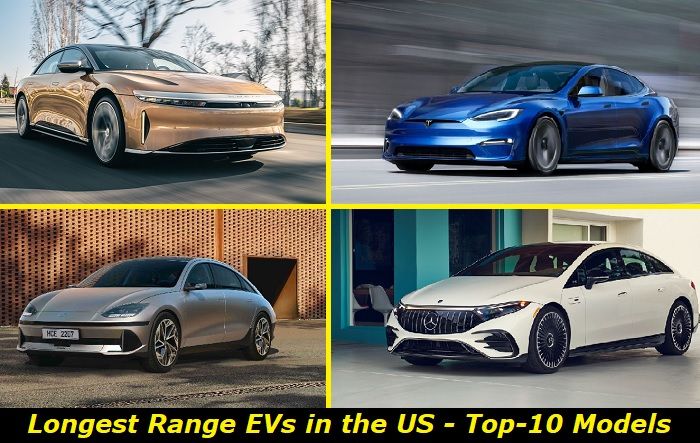Although Dodge vehicles are now manufactured within the Stellantis corporation, they used to have their own engines and other technologies. So, in this article, I will try to embrace all original Dodge engines that are the legends of the market.
Also, I will outline several engines that are used mostly by Dodge cars. This page is dynamic and it may be updated whenever I see updates on the market and can describe more engines in the blog.
.jpg)
You may also click the links in each section and get much more information about the chosen engine.
Dodge 4.7L engine
This engine was produced from 1999 to 2007 by Daimler Chrysler AG and became a legend under the hood of Dodge vehicles. This is the V8 4.7L engine belonging to the PowerTech family. It also has a brother with 3.7L of displacement and 6 cylinders.
The original version produced 235 horsepower and 295 lb-ft of torque. Interestingly, the PowerTech engine powered the Dodge Dakota, Durango, and also the Ram 1500. But it was also found under the hood of other vehicles such as the Jeep Grand Cherokee, Jeep Commander, Chrysler Aspen, and also the Mitsubishi Raider.
In 1999, it was largely recognized and got several important rewards as one of the best engines in the industry. Even now, you can find a lot of these machines on the roads. With good maintenance, they seem to be eternal.
These engines are notorious for coolant leaks, head gasket issues, and failure of valve seats.
Key facts and my opinion:
- Production years: 1999-2013
- Average lifespan of 4.7L: 230,000-280,000 miles
- Fuel supply type: port injection (sequential)
- Power range: 210-235 hp
- Fuel efficiency: bad
- Engine block material: cast iron
- Engine reliability score: medium
- The most common problems: issues with lubrication (thin oil passages), valve seats issues, weak three-chain timing system
Dodge 318 engine
The 318 engine by Dodge is one of the legends that managed to survive almost 30 years on the production line. It was first introduced in 1964 in the Plymouth Satellite and was actively used till 1992 in various Chrysler, Dodge, Plymouth, and other car brands.
This is the 5.2L V8 engine that belongs to the LA family. Within its life, the engine got a lot of modifications some of which became legendary and changed the way the automotive sphere developed.
Actually, now these engines are very popular upgrade options for tuners. They are very durable and can easily beat 1 million miles if driven carefully. They can develop an insane amount of power if upgraded professionally.
I should note its common issues: failing seals and gaskets in the engine, misfire issues, valves stuck in open, and also failing timing chain.
Key facts and my opinion:
- Production years: 1968-1989
- Average lifespan of 318: 220,000-280,000 miles
- Fuel supply type: carburetor
- Power range: 230 hp
- Fuel efficiency: bad
- Engine block material: cast iron
- Engine reliability score: high
- The most common problems: timing chain issues at high mileage, stuck valves, mysterious misfires.
Dodge 3.5 engine
This is one of the Dodge SOHC V6 family engines and one more legendary machine. It was in production from 1993 to 2010 and had several modifications with significant differences between each other. The 3.5 SOHC V6 engine by Dodge was used in a whole lot of Didge, Chrysler, and Plymouth cars.
This is the brother of the 3.3L engine but with a different intake and also with the timing belt instead of the chain. It started in 1992 with 214 horsepower but as modifications were issued, the engine managed to grow to 255 horsepower in stock leaving a lot to achieve for tuners and upgraders.
This engine survived up until 2010 when it was finally replaced by another legendary machine - the 3.6L Pentastar V6. Even now, you can find a lot of car tuners hunting for the 3.5 Dodge engine to upgrade it and still get a lot of reliability and miles to go.
Oil sludging, coolant leaks, unexplained overheating, and rough idle should be considered common problems.
Key facts and my opinion:
- Production years: 1993-2010
- Average lifespan of 3.5L: 220,000-240,000 miles
- Fuel supply type: port injection (sequential)
- Power range: 215-235 hp
- Fuel efficiency: average
- Engine block material: cast iron (later aluminum)
- Engine reliability score: high
- The most common problems: poor lubrication due to thin oil channels, uneven idling, contaminated throttle, EGR, and exhaust valves.
Dodge 3.5 high-output engine
In 1999, Dodge completely rebuilt the 3.5L SOHC V6 engine and offered the EGG version of it called High-Output. It jumped from the original 214 horsepower to a pretty wonderful 253 horsepower in stock.
The engine was largely changed in terms of intake and fuel supply but it remained a pretty reliable and long-lasting machine. Although it leaves a little less room for upgrades, the engine is still being hunted for by upgraders and tuners.
Among its problems, we can list such things as oil consumption at high mileage, crankshaft bearing issues, engine block damage due to lubrication or cooling issues, and also the premature wear of the PCV valve.
Key facts and my opinion:
- Production years: 1998-2010
- Average lifespan of 3.5 HO: 210,000-230,000 miles
- Fuel supply type: port injection (sequential)
- Power range: 247-253 hp
- Fuel efficiency: below average
- Engine block material: aluminum
- Engine reliability score: high
- The most common problems: poor lubrication due to thin oil channels, uneven idling, contaminated throttle, EGR, and exhaust valves.
Dodge 6.7 Cummins engine
This is the newest B-Series Cummins engine and is worth your attention. It mainly powers the Ram 2500/3500 model and is one of the greatest diesel engines in the world, according to many reviews and expert opinions.
The Cummins engine is a great straight-six engine (the largest straight-6 for any truck in the world). It can develop up to 1075 lb-ft of torque. The engine has been used in a lot of other transport like school buses and heavy trucks.
Interestingly, there are a lot of problems like the issues with the fuel supply or a leaky head gasket. Also, there are issues with the turbo. But the Cummins diesel engine is still one of the most reliable among its competitors.
This engine is the big brother of the 5.9L Cummins that I won't describe separately in this article.
Key features and my opinion about the engine:
- Production years:2007-now
- Average lifespan of 6.7 Cummins:350,000-500,000 miles
- Fuel supply type:Common Rail
- Power range:150-420 hp
- Fuel efficiency:bad
- Engine block material:cast iron
- Engine reliability score:high
- The most common problems:fuel supply issues, head gasket failure, turbocharger problems.
Dodge 3.9 Magnum V6 engine
The 3.9 Magnum V6 engine by Dodge belongs to the LA family. This was the 5.2L V8 engine with two cylinders removed from its block. The engine was initially introduced in Ram trucks but eventually found its way into the Ram Wagon and also Dodge Dakota.
With 180 horsepower and 220 lb-ft of torque, this was the workhorse to consider. The engine survived up to 2003. This is one more legend in the Dodge engines lineup.
Interestingly, the Magnum V6 was notorious for its rough idle problems, its crank position sensor was often broken, EVAP leaks were pretty common, and it wasn't equipped with really durable transmissions. Other than that, this is one of the most reliable Dodge engines.
Key facts and my opinion:
- Production years: 1992-2003
- Average lifespan of 3.9 Magnum V6: 220,000-250,000 miles
- Fuel supply type: port injection
- Power range: 175-180 hp
- Fuel efficiency: below average
- Engine block material: cast iron
- Engine reliability score: high
- The most common problems: rough work, weak sensors, fluid leaks, minor issues.
About the authors
The CarAraC research team is composed of seasoned auto mechanics and automotive industry professionals, including individuals with advanced degrees and certifications in their field. Our team members boast prestigious credentials, reflecting their extensive knowledge and skills. These qualifications include: IMI: Institute of the Motor Industry, ASE-Certified Master Automobile Technicians; Coventry University, Graduate of MA in Automotive Journalism; Politecnico di Torino, Italy, MS Automotive Engineering; Ss. Cyril and Methodius University in Skopje, Mechanical University in Skopje; TOC Automotive College; DHA Suffa University, Department of Mechanical Engineering






Add comment